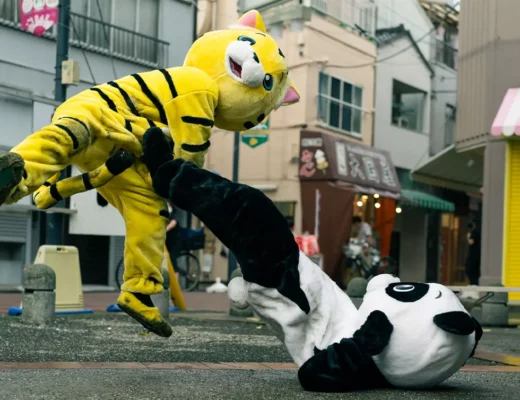When we open our eyes, what is it that we first see? There’s inanimate objects that we can recognize, but that requires several steps beyond the fundamental act of perception that occurs when one chooses to see the world around them. Before we can cognize even the simplest of items, there’s a bit of dance that takes place between two opposing optical forces: darkness and light. Green Ash opens with an understanding of such a dichotomy, how both are integral natural forces that serve as access points to the basics of vision: stray bands of tinted sunlight pierce through a blackened screen with no accompanying music, creating a rhythmic pattern of growing intensity that builds off of the Brakhage-ian tradition — one that suggests that the most miniscule of changes within a frame can completely alter a viewer’s understanding of a work. Pablo Mazzolo provides little context outside of the purely ocular: we’re informed of the hundreds of Hênia-Kâmîare women, children, and elders who jumped from the Córdoba Mountains in 1575, all to avoid lives of servitude to the Spanish Empire.
Yet, nothing shown pronounces an immediate connection to such horrific events; the mountains, covered in lush green hues, flicker not only with a fixation on light-intervals, but with attention placed on differing focus-fixtures that adds a hallucinatory aura to the overgrown ridge. One becomes disoriented rather quickly with this approach, where what we’re ostensibly viewing becomes different from what we’re experiencing: the distance between the landscape as is and the feeling provided from abstracting these images on their most pictorial level becomes greater. Mazzolo keeps turning the brightness up by the end, basking in the fervor of his increasing luminosity before redefining this space once again — by setting it against a crudely-drawn map of Argentina, revealing how minuscule these mountains are on a more global scale. Again, viewing these hills as something historical, or even geographical, is not the first thing we would even consider seeing; such concepts have little value against the totality of illumination.
Published as part of Neighboring Scenes 2020.







